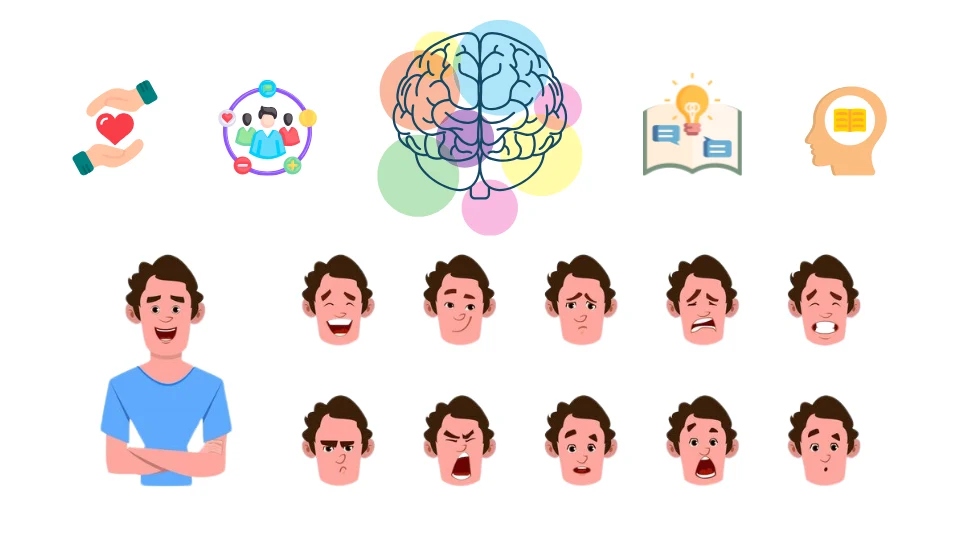What Are the Best Examples of Emotional Marketing in Action?

Did you know emotional content makes ads twice as effective as those with only facts? Let’s explore a few inspiring examples of how brands use emotional marketing effectively.
Emotions play a massive role in consumer choices, influencing up to 80% of purchasing decisions. This is where applied emotions come into marketing.
It’s about building real connections with consumers through feelings and shared values. In this blog, we’ll explore what emotional marketing means, how it works, examples of it in action, and why it’s so important for brands today.
Understanding Emotion and Its Power
What is Emotional Marketing? Emotional marketing is a strategy that uses emotions to engage consumers, creating strong and lasting impressions. Unlike traditional marketing, which focuses on features, emotional marketing aims to connect with people’s values and aspirations.
According to research by Marc Gobé, who popularized the concept of emotional branding in his book Emotional Branding: The New Paradigm for Connecting Brands to People, this type of marketing goes beyond selling products; it builds relationships.
Why Emotional Marketing Works: A Look at the Science
Emotions are processed faster than logical thought by the brain’s amygdala. This is why emotional connections are more impactful than facts.
Emotions influence decisions more deeply and stay with us longer. For example, if an ad shows a moment that evokes joy or nostalgia, we are more likely to remember it and act on it.
Top Brands That Use It Effectively
What Brands Use Emotional Marketing?
Many brands successfully use emotional marketing to create lasting bonds with their audience, some of the examples are:
- Disney taps into childhood memories and family moments, creating a feeling of warmth and happiness.
- Nike motivates people with messages that inspire strength and self-belief through campaigns like “Just Do It.”
- Apple doesn’t just sell gadgets; it sells the experience of elegance and creativity, which inspires love and loyalty.
- Peugeot appeals to the senses by integrating unique fragrances into their car ventilation systems, creating a memorable driving experience.
- Singapore Airlines uses sensory marketing by incorporating distinct scents, soundscapes, and warm customer service to create a luxurious experience.
How Do Brands Evoke Emotions?
These brands use several techniques:
Storytelling in Emotional Marketing: Capturing Hearts
Nike’s ads often tell stories of athletes overcoming obstacles, as a result inspiring viewers to strive for their own goals.
Sensory Marketing: Creating Memorable Experiences
Singapore Airlines’ use of unique scents and hot towels engages passengers’ senses, fostering a deeper connection.
Cultural Connections in Emotional Marketing: A Global Perspective
Disney embraces cultural nostalgia, reminding audiences of beloved childhood stories and movies.
Emotional Values: The Key to Brand Loyalty
What Are Emotional Values?
Emotional values are the specific feelings that brands aim to evoke in their customers. These include happiness, pride, love, and nostalgia. Brands that understand their audience’s emotional values can form stronger connections.
Examples of Emotional Values in Brands:
- Happiness: Coca-Cola’s advertising campaigns are known for showcasing joy and celebration.
- Pride and Power: Nike’s “Just Do It” campaigns inspire the experience of empowerment.
- Nostalgia: Brands like Williams-Sonoma use imagery that reminds people of home and comfort.
Why Emotional Values Matter
When brands align their messages with their audience’s emotional values, they build trust. A report by Gallup indicates that brands like Bank of America and Walmart successfully create emotional connections, even in marketing in non-glamorous sectors. This shows that any brand, with the right approach, can foster emotional engagement.
Examples of Emotional Products in Everyday Life
What Are Emotional Products?
Some products naturally evoke emotions. These include travel, cars, and experiences. For instance, a car isn’t just a vehicle; it’s a symbol of freedom and adventure. A vacation package isn’t only about the destination but the memories and excitement it brings.
What Are Emotional Value Products?
These are products whose main value lies in the emotions they evoke or the emotional connections they create. Examples include:
- Clothing: A T-shirt with a meaningful slogan can express someone’s beliefs or personality.
- Social Media Platforms: Apps like Instagram foster feelings of connection by enabling people to share and engage with others.
- Products for Well-being: Meditation apps like Calm help users feel relaxed and balanced, focusing on mental and emotional health.
The Benefits of It for Modern Brands
Why Should Brands Use Emotional Marketing?
Emotional marketing has many benefits, for example:
- Stronger Brand Loyalty: Consumers stay with brands that make them feel good. For instance, Apple users often continue buying Apple products because of the brand’s strong emotional pull.
- Better Customer Relationships: People are more likely to recommend a brand they have an emotional connection.
- Standing Out in Crowded Markets: Emotional marketing helps brands differentiate themselves from competitors.
- Enhanced Brand Advocacy: A consumer who feels connected to a brand is more likely to become an advocate for it.
Research shows that brands that use emotional marketing enjoy better customer loyalty and advocacy. For example, Nike doesn’t just sell shoes; it creates a sense of empowerment, making customers feel like champions.
How to Implement It in Your Campaigns
Why It Matters:
Emotional marketing is not just a trend; it’s essential for building long-lasting customer relationships. By focusing on storytelling, tapping into emotions, and understanding your audience’s values, you can make your brand more memorable and impactful.
So, if you’re looking to strengthen your brand’s presence, start by asking:
What emotion do I want my customers to feel?
This simple question can guide your entire strategy and help create a lasting connection with your audience.
Key Takeaways
- Use stories that speak directly to your audience’s experiences.
- Incorporate sensory details like images or music to evoke specific emotions.
- Always be authentic in your messaging to build trust and loyalty.
Start using emotional marketing today and watch your brand become not just recognized, but truly loved.
















